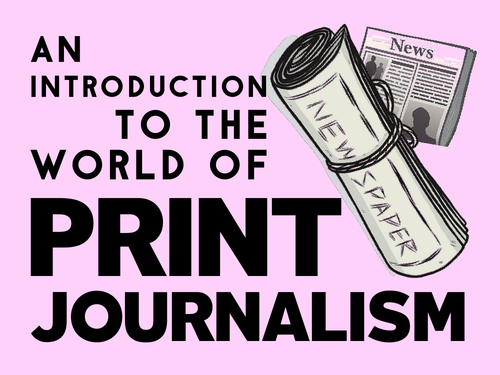
This 20-slide lesson offers a comprehensive introduction to print journalism.
In this lesson, students reflect on the trustworthiness of the news and their engagement with it. They learn what ‘journalism’ means and explore its different written forms, thinking about how it has adapted and evolved in the modern world.
Students learn how to write journalistically, thinking about style, layout, and form. We consider the role of the ‘front page’ and analyse some examples, learning about the specialised vocabulary for describing different aspects of front pages. Students learn about the main printed newspapers of the UK - noting differences between broadsheet and tabloid - and we reflect on the angles, agendas, and demographics to which each newspaper is adhering.
Students are also encouraged to reflect on their engagement with international news, and we ask important questions about what makes us ‘interested’ in a journalistic story. We also ask whether there is a place for printed journalism in the modern world, and if we are experiencing the ‘death of print’.
The lesson ends with a research task for students to look up and define key journalistic terms. This is an ideal lesson for introducing students aged 10+ to print journalism.
PowerPoint saved as PDF.
Something went wrong, please try again later.
This resource hasn't been reviewed yet
To ensure quality for our reviews, only customers who have purchased this resource can review it
Report this resourceto let us know if it violates our terms and conditions.
Our customer service team will review your report and will be in touch.
